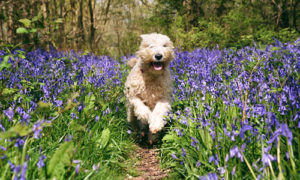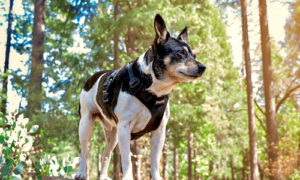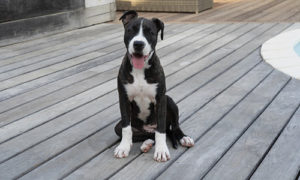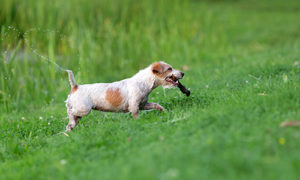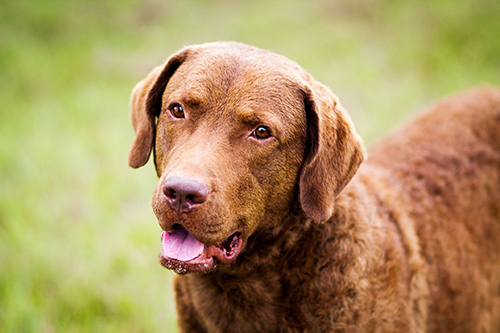
The Chesapeake Bay Retriever is a local breed of America, and its development was one of history’s timely accidents. A British ship was wrecked off Maryland’s coast in 1807. Along with the cargo and crew, two Newfoundland puppies were rescued and ultimately gifted to the people that rescued the crew. Years later, these exceptional water retrievers were bred to local stock around the Chesapeake Bay, and these matings provided the breed’s foundation stock. It is also assumed that the Bloodhound, Irish Water Spaniel, and other regional hound crosses added to the breed’s development.
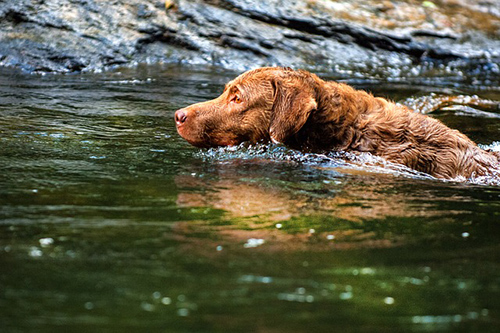
Breed Standard
The Chesapeake Bay Retriever is a moderately sized, powerful dog with the intelligence, agility, stamina, and instinct to retrieve from water or land. It is slightly rectangular in proportion with sturdy bone; a deep chest; a short, strong back; and a medium-length tail. The dog’s most distinctive feature is its short, waterproof, harsh coat. The breed’s skull is broad and round, with long, powerful jaws. The eyes are widely set and range in color from amber to yellow, producing an intense, intelligent expression.
The Chessie was developed to hunt waterfowl under unfavorable conditions, facing strong tides in high winds, rough water, and at times even having to break through ice. It is a fantastic swimmer, with a tender, yet strong bite, enabling it to carry birds. Also, the dog’s feet are webbed and powerful.
Breed Facts
| Energy level | Watchdog ability | ||
| Exercise requirements | Protection ability | ||
| Playfulness | Grooming requirements | ||
| Affection level | Cold tolerance | ||
| Friendliness toward dogs | Heat tolerance | ||
| Friendliness toward other pets | Friendliness toward strangers | ||
| Ease of training |
- Popularity: Popular
- Family group: Gundog, Retriever
- Country of Origin: United States
- Date developed: 1800s
- Original purpose: Water retriever
- Today’s purpose: Water retriever, retriever field trials, companion
- Other names: None
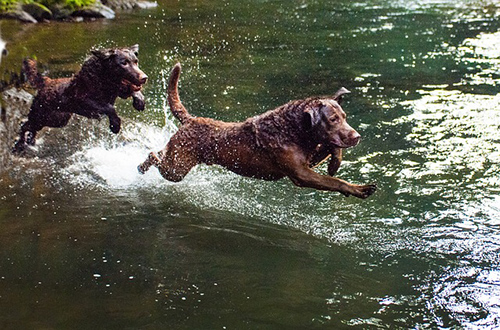
Activity level: High. The Chesapeake Bay Retriever is a working dog with excellent stamina. Alongside hunting and dog sports, Chessies enjoy swimming, jogging, and hiking. This sizeable active dog requires daily exercise.
Grooming: The dog’s wavy, oily coat requires weekly brushing; however, it is mainly easy to maintain. It hardly needs washing; as a matter of fact, it is not easy to get a Chesapeake Bay Retriever wet. Too much bathing destroys the coat’s oils and eventually its water resistance.
Coat: The Chessie possesses a protective double coat. The outer coat is wavy, harsh, and oily, up to 1½ inches in length. The dog’s undercoat is dense, fine, and woolly. The coat is shorter and straighter on the face and legs, with moderate feathering up to 1¼ inches long on the tail and hindquarters.
Color: Shades of brown, sedge (red), and deadgrass (tan). The Chesapeake’s color should blend in with its working environment.
Group: Sporting
Year of recognition from the AKC: 1878
Chesapeake Bay Retriever Temperament
Chesapeake Bay Retrievers are known for their water-retrieving skills and hardiness. The dogs are affectionate and loyal companions and willing workers, but they can become willful and overly assertive if not adequately trained. The breed is versatile and does exceptionally well in many dog sports.
This breed is tough enough to withstand and enjoy continuous plunges into icy water. It relishes swimming and retrieving. Though it enjoys an active life outdoors, it tends to be calm when inside the home. The Chessie is eager to learn, although it can be independent. It can be protective and is reserved with strangers. Also, if challenged, it can be aggressive toward strange dogs. The Chessie is the most strong-willed, hardiest, and protective among the retriever breeds.
Health
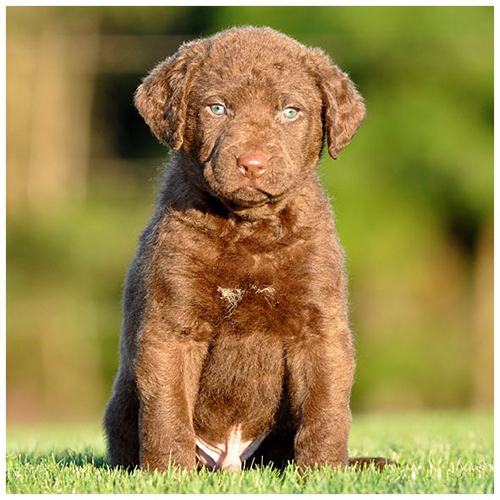
- Main concerns: CHD, gastric torsion
- Minor problems: PRA, hypothyroidism
- Rarely seen: entropion, OCD, elbow dysplasia, cerebellar abiotrophy
- Recommended tests: hip, eye, elbow, (thyroid), (cardiac)
- Life span: 10 to 13 years
- Weight: Male – 65 to 80 pounds; Female – 55 to 70 pounds
- Height: Male – 23 to 26 inches; Female – 21 to 24 inches
Breeder and Buyer’s Advice
Potential Chesapeake Bay Retriever owners must prepare themselves to commit to the basics of training, adequate attention, interaction, and ongoing socialization with animals and people.
- Parent club: American Chesapeake Club (https://amchessieclub.org/); founded in 1918
- Rescue: Information can be found on the parent club’s website about rescue dogs

